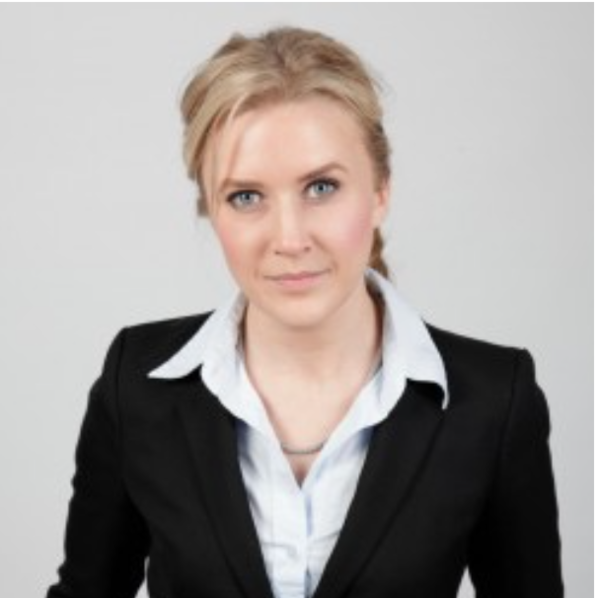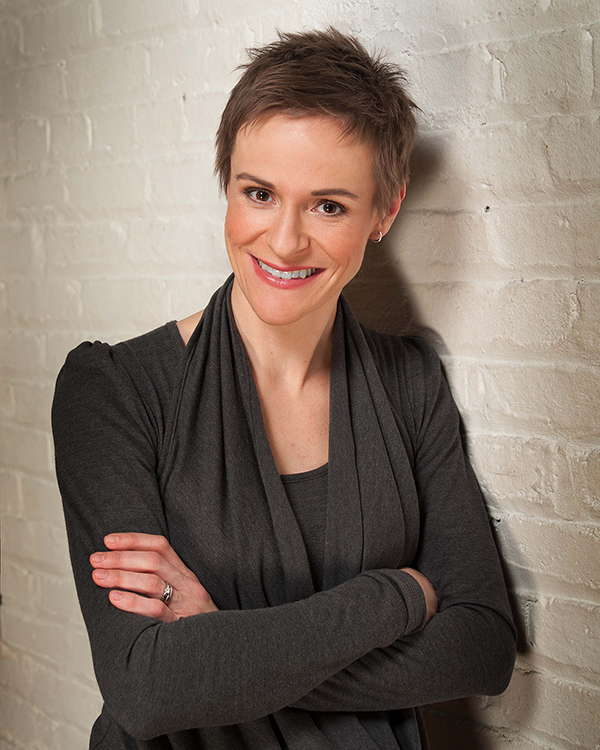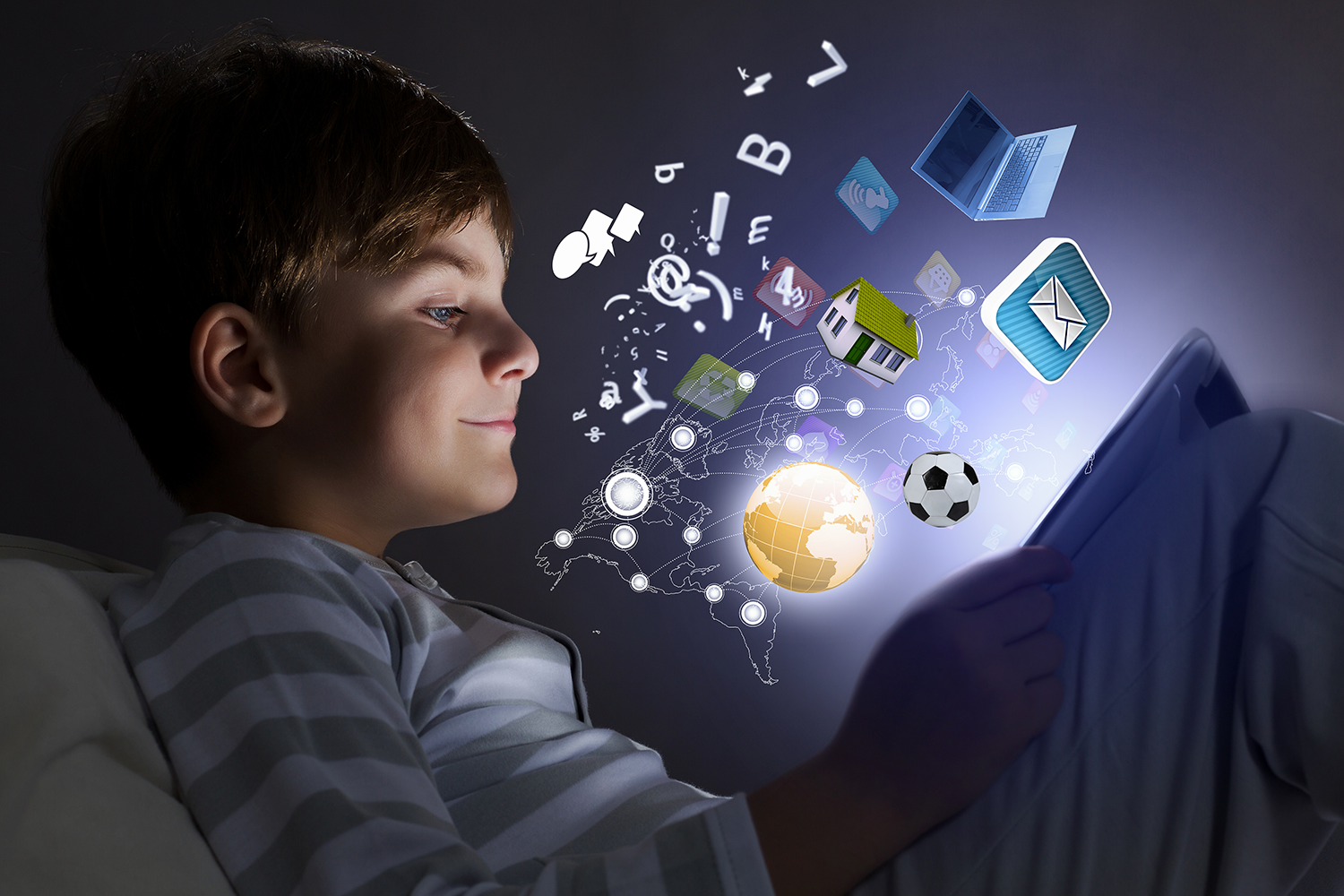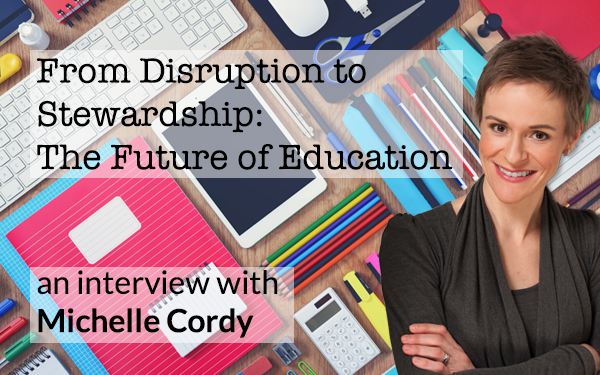From Disruption to Stewardship: The Future of Education
 Elizabeth C. Nelson —
Elizabeth C. Nelson —
Michelle Cordy is a 3rd grade teacher, thought leader, and educational disrupter who has become renown for her advanced practices in the classroom and challenging tradition. I had a fascinating interview with her which challenged me to reconsider how we prepare children for “the real world” and what expectations are reasonable for our youngest generation.

Social Media in the Classroom
Known for her tech savvy classroom, Michelle states that the iPad is her favorite tool followed by any internet enabled device. Completely to my surprise, she also loves using Facebook, Instagram, and gaming platforms with her students. And I’m not alone in my shock. A study by the University of Phoenix showed that 87% of teachers polled have not incorporated social media into their classrooms and 62% are reluctant to do so.
In a proactive step toward practical education Michelle believes it’s part of her job to help kids navigate through the online experience that is modern childhood.
“Online platforms are collaborative spaces where children are engaging in digitally mediated relationships, and as an adult in their lives it’s probably my responsibility to help mediate the students in this space. If you were at a playground and saw a child in an emergency, you would respond. Same with online experiences, there should be caring adults there to help them.”
This feeling is supported by Kathy Cook, dean of educational technology at University of Phoenix College of Education who believes education for digital citizenship of teachers and students is essential and the opportunities for teachers to play a leadership role in this area is tremendous.
“Kids want to be seen but not monitored, on their terms.”
Online mediation does have its boundaries. Michelle strongly believes that her presence online should be confined to keeping an eye on her students, not monitoring their behavior. With so much of life being online it is a wonder why there is no training in this area. A study done by Pew Research found that 95% of teens are online, and 81% use social networking sites. Michelle believes in order to face the challenges students need to be engaged and have the tools to do so.

High Expectations
In the tradition of disruptors and innovators, Michelle has been criticized for her teaching methods and in particular her high expectations. Michelle described a time when she had a parent who gestured her hands one foot apart and said, this is the curriculum and then spread her arms apart and said this is what you expect of kids. It is always a surprise to Michelle.
“It never strikes me as too hard because my kids do so well. A classroom is a space where a teacher creates an environment that makes their students feel comfortable and capable. They thrive on hard work. Kids are constantly exploring their growth and developing stuff they hadn’t done before. They love the feeling of growth over time.”
So how do you challenge your students in a classroom that is quite different from their parents' experience? The generation of current parents grew up with little technology in the home and classroom. So it’s logical that those parents expect to see their experiences in their kids' curriculum such as spelling and cursive. But challenging your students includes pushing traditions.
Enhancing The Classroom
How do we enhance the classroom with these societal challenges? The good news is challenging students seems to be the easiest part of the process. The drive to be challenged and learn is intrinsic and learning can be infectious given the right tools. Michelle is an excellent example of that. Where education can benefit is training and education on the benefits of using innovative methods. The Pew Study revealed that 20% of teachers felt intimidated by their students' knowledge or use of technology and nearly half expressed the desire to learn more about integrating technology into the classroom. There seems to be an opportunity to not only grow a child’s experience but also enhance their knowledge and experience of the world around them.
As Theodore Levitt said: “Creativity is thinking up new things. Innovation is doing new things.”
A big thanks for to Michelle Cordy for adding her experience to this article. Let’s do new great things in the classroom!


